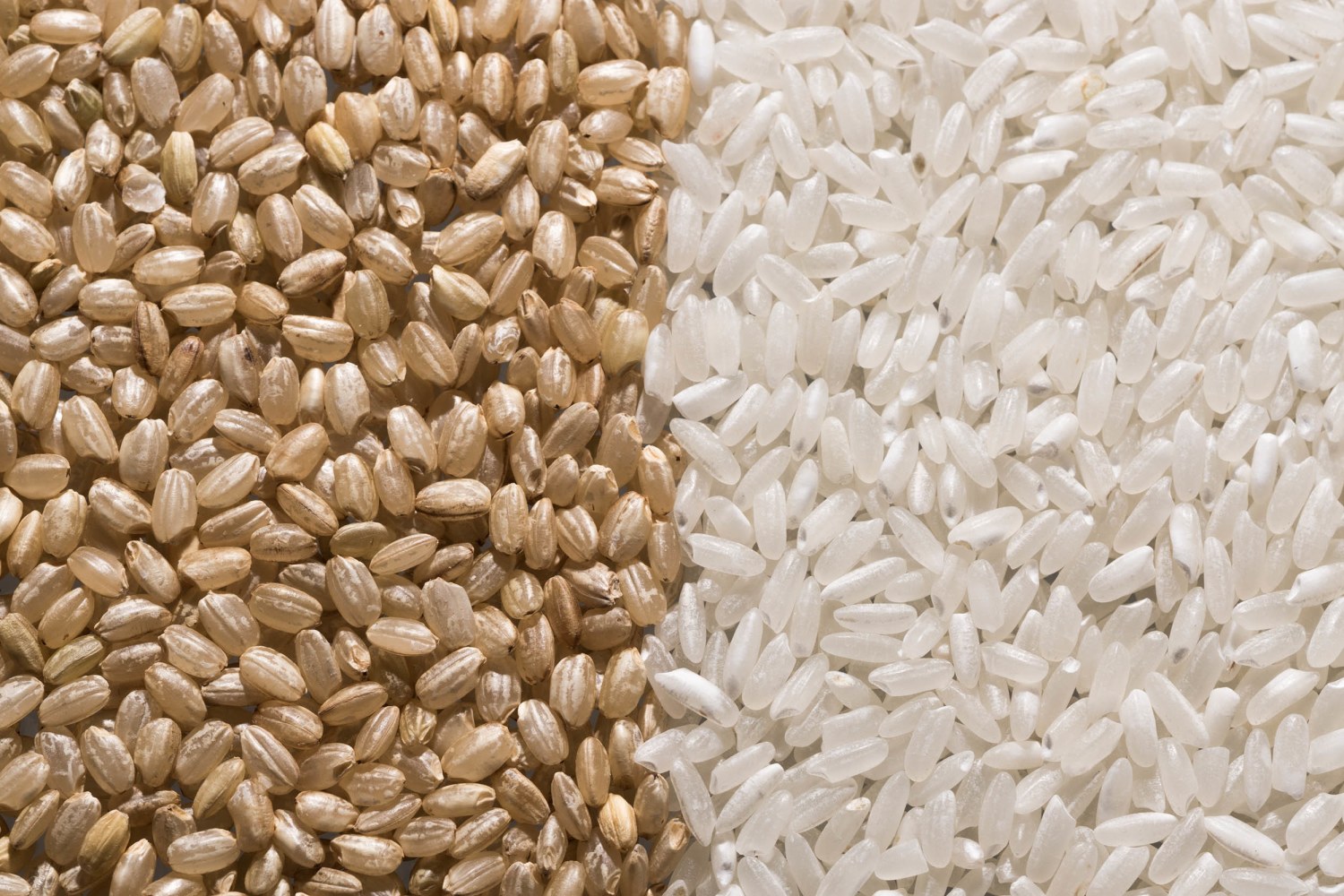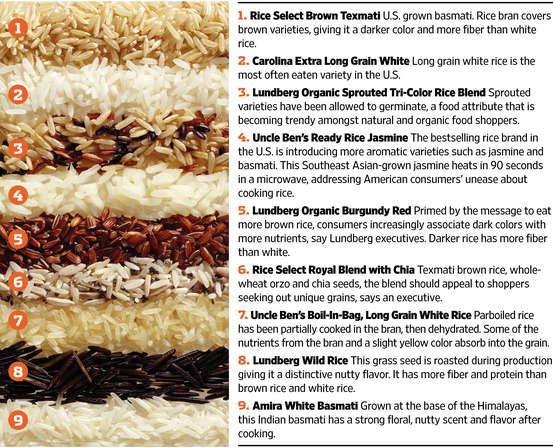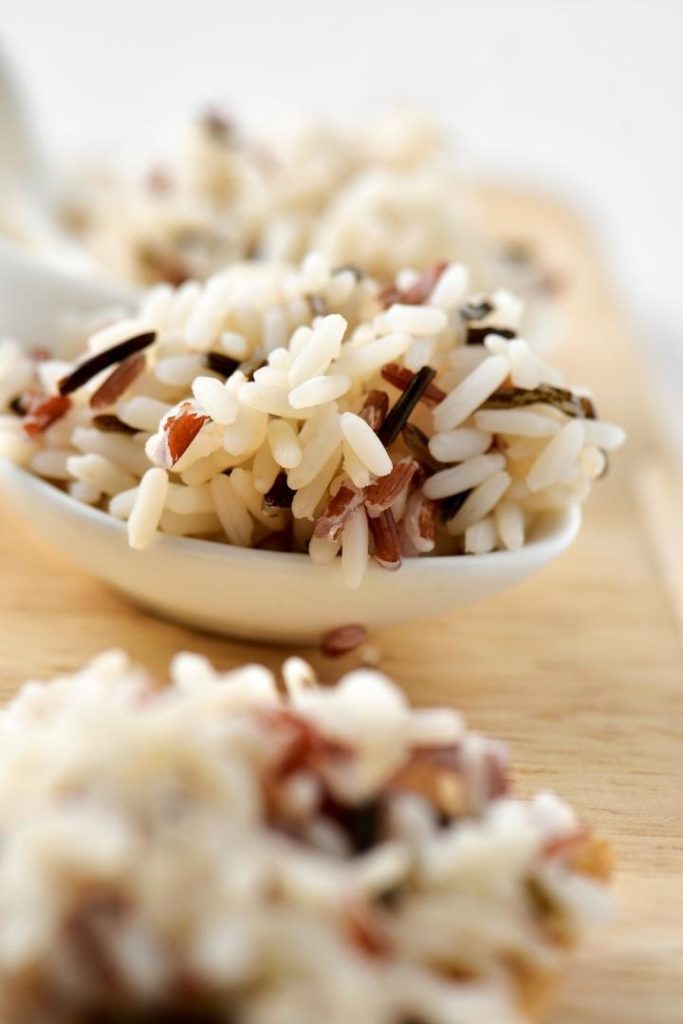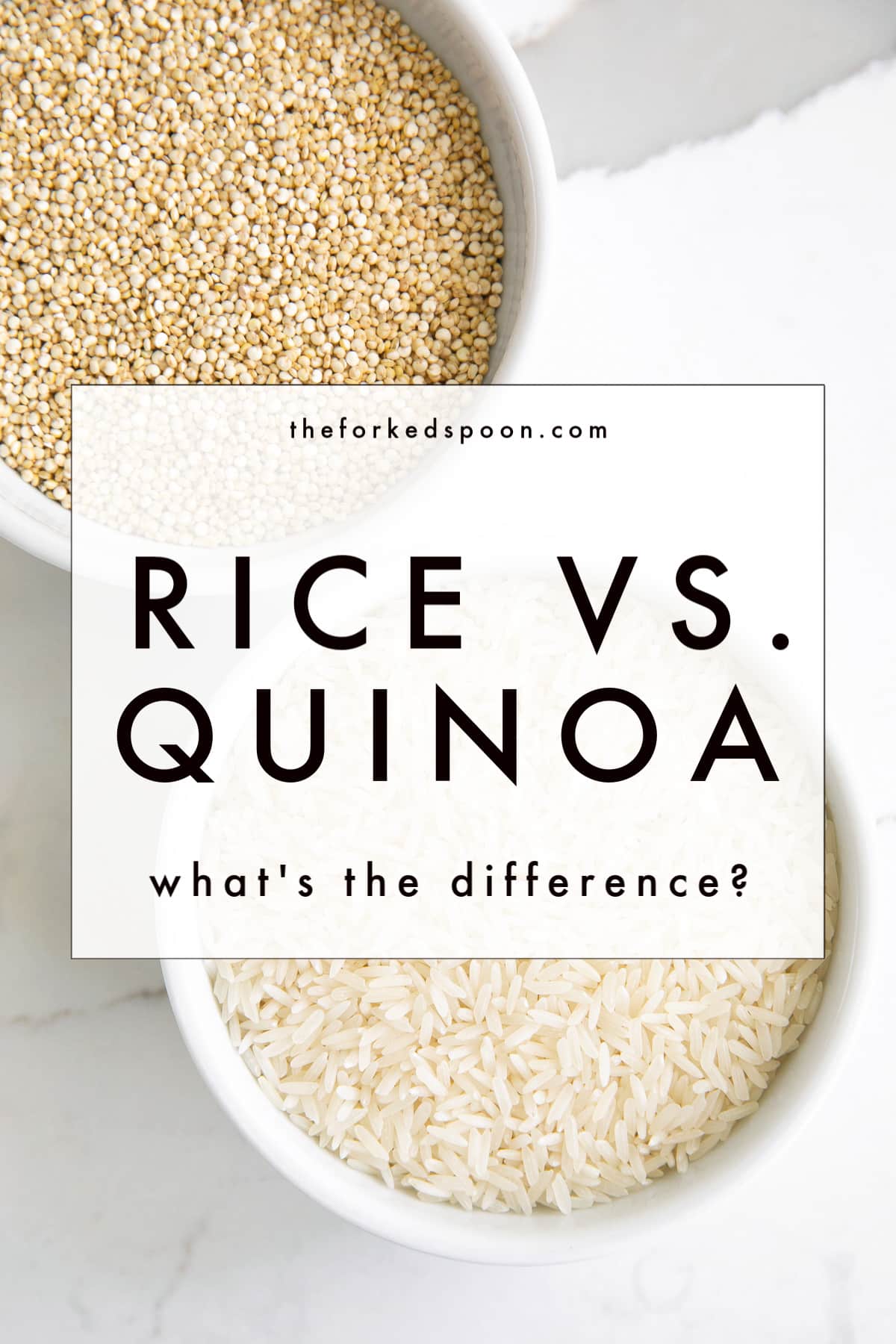Understanding White Rice

White rice, a staple in many cuisines, is a versatile grain that can be adapted to various flavors and ingredients. It comes in different subtypes, such as Jasmine, Basmati, and Arborio, each with its own unique personality. Choosing the right type of rice is essential for achieving the desired texture and flavor in your dishes. Whether you prefer the long-grained and aromatic Basmati or the sticky consistency of sushi rice, understanding the characteristics of white rice can elevate your culinary adventures. Experiment with different types to discover your favorite and enhance your meals.
White Rice Nutrition And Cooking Methods
White rice, despite being stripped of its husk, bran, and germ, still provides essential nutrients. It is a good source of carbohydrates and offers some protein. Additionally, white rice is low in fat and sodium. When it comes to cooking methods, white rice is typically boiled or steamed. The ratio of water to rice and cooking time can vary depending on the desired texture. For fluffier rice, a 1:2 water to rice ratio and shorter cooking time is recommended, while stickier rice requires more water and longer cooking. Experiment with different methods to achieve your ideal consistency.
White Rice Versus Wild Rice: Differences And Benefits
When comparing white rice and wild rice, there are several key differences to consider. Firstly, white rice is a more common variety that is widely available and affordable, while wild rice is considered more exotic and has a stronger, nuttier flavor. In terms of nutritional value, wild rice is higher in protein and fiber compared to white rice. It also contains more vitamins and minerals such as magnesium and zinc. Additionally, wild rice has a lower glycemic index, making it a better option for those watching their blood sugar levels. However, white rice is easier to cook and has a softer texture, making it a versatile choice for various dishes. Ultimately, the choice between white rice and wild rice depends on individual dietary needs and preferences.
Exploring Wild Rice

Wild rice is not your typical rice. It is actually a long grass that grows in a similar way to rice. Unlike white rice, wild rice has a more exotic and unique flavor profile. It has a nutty taste and a slightly chewy texture, adding a delightful element to dishes. In terms of nutritional value, wild rice is a winner. It is higher in protein and fiber compared to white rice, making it a healthier option. Its distinct flavor and nutritional benefits make wild rice a popular choice for those looking to explore different varieties of rice.
Wild Rice Nutritional Value And Culinary Uses
Wild rice is not only delicious but also highly nutritious. It is packed with essential nutrients such as protein, fiber, vitamins, and minerals. A 100-gram serving of cooked wild rice contains about 4 grams of protein and 2 grams of fiber. It is also a good source of minerals like manganese, magnesium, and phosphorus.
With its unique flavor and texture, wild rice is a versatile ingredient that can be used in a variety of culinary creations. It can be enjoyed as a side dish, added to soups or salads, or even incorporated into stuffings and casseroles. Its nutty taste and chewy texture add depth and complexity to any dish, making wild rice a popular choice among food enthusiasts. So, whether you’re looking to add more nutrition to your diet or elevate your culinary creations, wild rice is a fantastic choice.
Wild Rice Cooking Techniques And Flavors
Wild rice can be cooked using various methods to bring out its unique flavors and textures. Some common cooking techniques include boiling, steaming, and simmering. To enhance the taste of wild rice, you can cook it in broth or add spices and herbs, such as garlic, thyme, or bay leaves. This will infuse the rice with aromatic flavors and make it even more delicious. You can also pair wild rice with other ingredients like vegetables, mushrooms, or nuts to create flavorful and nutritious dishes. The versatility of wild rice allows for endless culinary possibilities.
Health Benefits Of White Rice

White rice may not have the same nutrient profile as wild rice, but it still offers some health benefits. Firstly, white rice is a good source of energy, providing carbohydrates that fuel our bodies. It is also easy to digest, making it suitable for individuals with digestive issues. Additionally, white rice is fortified with essential nutrients like iron, folate, and niacin, which are important for overall health. While it may not be as nutritious as wild rice, white rice can still be enjoyed as part of a balanced diet.
White Rice And Its Impact On Health
White rice, although not as nutritionally dense as wild rice, still offers some health benefits. It serves as a good source of energy due to its high carbohydrate content, providing fuel for the body. Additionally, white rice is easy to digest, making it suitable for individuals with digestive issues. Moreover, it is fortified with essential nutrients like iron, folate, and niacin, which are important for overall health. While white rice may not have as many health benefits as wild rice, it can still be enjoyed as part of a balanced diet.
Comparing White Rice To Wild Rice In Terms Of Nutrition
When it comes to nutrition, there are significant differences between white rice and wild rice. While white rice is a good source of energy due to its high carbohydrate content, wild rice offers a more diverse range of nutrients. It contains less calories and more protein, fiber, potassium, and zinc compared to white rice. Additionally, wild rice is richer in antioxidants, which can help protect the body against oxidative stress. Overall, if you’re looking for a grain with higher nutritional value, wild rice is a great option to consider.
Health Benefits Of Wild Rice

Wild rice offers a wide range of health benefits due to its nutrient content. It is packed with antioxidants that help protect the body against free radicals, reducing the risk of chronic diseases. Wild rice is also a good source of dietary fiber, promoting healthy digestion and preventing constipation. Additionally, it is rich in essential minerals like potassium and zinc, which are important for maintaining proper bodily functions. The high protein content in wild rice aids in muscle growth and repair. Incorporating wild rice into your diet can contribute to overall health and wellbeing.
Wild Rice And Its Health Benefits
Wild rice offers numerous health benefits due to its nutrient-rich composition. With a significantly higher antioxidant content compared to white rice, wild rice helps protect the body against free radicals, reducing the risk of chronic diseases. It is also a good source of dietary fiber, promoting healthy digestion and preventing constipation. Moreover, wild rice is rich in essential minerals like potassium and zinc, which play a vital role in maintaining proper bodily functions. Additionally, its high protein content aids in muscle growth and repair. Incorporating wild rice into one’s diet can contribute to overall health and wellbeing.
Comparing Wild Rice To White Rice For A Healthy Diet
When it comes to choosing a grain for a healthy diet, comparing wild rice to white rice can help make an informed decision. Wild rice is often considered a healthier option due to its higher nutrient content. It contains more fiber, protein, potassium, and zinc compared to white rice. These nutrients are essential for maintaining overall health and wellbeing. Additionally, the higher antioxidant content in wild rice offers protection against chronic diseases. Incorporating wild rice into your diet can be a nutritious choice that supports your health goals.
Choosing Your Grain: White Rice Vs. Wild Rice

When it comes to choosing between white rice and wild rice, it’s important to consider your specific dietary needs and preferences. White rice is a more common and widely available option, with a milder flavor and softer texture. It is a good choice for dishes that require a neutral base, such as stir-fries or rice salads. On the other hand, wild rice offers a nuttier flavor and firmer texture. It is a great option for dishes that benefit from a chewier texture, such as pilafs or stuffings. Additionally, wild rice is often considered healthier due to its higher nutrient content. It contains more fiber, protein, potassium, and zinc compared to white rice. However, it is important to note that both white rice and wild rice can be part of a healthy diet when consumed in moderation. Ultimately, the choice between white rice and wild rice depends on your personal taste preferences, dietary goals, and the specific dish you are preparing.
Factors To Consider When Choosing Between White Rice And Wild Rice
When deciding between white rice and wild rice, there are several factors to consider. Firstly, taste and texture play a significant role. White rice has a milder flavor and a softer texture, making it suitable as a neutral base for various dishes. On the other hand, wild rice offers a nuttier taste and a chewier texture, which adds a unique element to dishes like pilafs or stuffings. Another factor is nutrition. Wild rice contains more fiber, protein, potassium, and zinc compared to white rice. Lastly, personal preferences, dietary goals, and the specific dish being prepared should also be taken into account.
Cooking Tips And Recipes For White Rice And Wild Rice
When it comes to cooking white rice, there are a few tips to keep in mind. Firstly, rinse the rice before cooking to remove any excess starch. Use a ratio of 1 cup of rice to 2 cups of water and bring it to a boil. Once boiling, reduce the heat and let it simmer for about 15-20 minutes until all of the water is absorbed. Fluff the rice with a fork before serving.
As for wild rice, it requires a slightly different cooking method. The ratio of wild rice to water is 1 cup of rice to 3 cups of water. Bring it to a boil, then reduce the heat and let it simmer for about 45-60 minutes until tender. Drain any excess water before serving.
Now, let’s explore some delicious recipes using white rice and wild rice:
- White Rice Recipe: Chicken Fried Rice
- Cook white rice according to the instructions.- In a wok, heat oil and stir-fry diced chicken with vegetables like peas, carrots, and onions.- Add cooked rice to the wok and mix well.- Season with soy sauce, salt, and pepper.- Optional: Add scrambled eggs for extra protein.- Serve hot and enjoy!
- Wild Rice Recipe: Wild Rice Salad
- Cook wild rice according to the instructions.- In a bowl, combine cooked wild rice with diced cucumber, cherry tomatoes, and chopped herbs like parsley and mint.- Drizzle with a dressing made from olive oil, lemon juice, and Dijon mustard.- Add salt and pepper to taste.- Toss everything together and let it sit for a few minutes for the flavors to meld.- Serve as a refreshing salad or as a side dish.
These are just a few examples, but the possibilities with white rice and wild rice are endless. Experiment with different spices, vegetables, and proteins to create your own unique dishes. Whether you prefer the simplicity of white rice or the earthy flavors of wild rice, both grains can be incorporated into a wide range of cuisines and recipes.
Conclusion

In conclusion, the showdown between white rice and wild rice reveals two distinct grains with unique qualities and benefits. White rice offers simplicity and versatility, making it a staple in many cuisines. On the other hand, wild rice brings earthy flavors and a higher nutritional value to the table. Both grains can be incorporated into a healthy diet depending on individual preferences and dietary needs. By understanding the differences between white rice and wild rice and exploring various cooking methods and recipes, you can enjoy the diverse world of rice and enhance your culinary experiences.
Summarizing The Varieties Of Rice And Their Unique Qualities
There are numerous varieties of rice, each with its own unique qualities and flavors. Basmati rice is known for its long, slender grains and fragrant aroma, making it a popular choice for dishes like biryani. Jasmine rice, on the other hand, has a subtle floral aroma and a slightly sticky texture, perfect for accompanying Thai curries. Arborio rice is a favorite for creamy risottos due to its high starch content, while sushi rice has a sticky texture that holds together well when rolled into sushi. These are just a few examples of the diverse world of rice, each offering something special to enhance your culinary creations.
Final Thoughts On Incorporating White Rice And Wild Rice Into Your Diet
Incorporating both white rice and wild rice into your diet can provide a variety of flavors and nutritional benefits. White rice offers a versatile base for many dishes and is a good source of energy. On the other hand, wild rice provides a richer texture, higher fiber content, and a nutty flavor. It’s important to consider your dietary needs and preferences when choosing between the two. Whether you opt for the simplicity of white rice or the complexity of wild rice, both grains can be enjoyed as part of a balanced diet.
FAQ About Rice Showdown: White Rice Vs Wild Rice: Choosing Your Grain
Q: What are the main differences between white rice and wild rice?
A: White rice is polished to remove the bran and germ layers, while wild rice is a whole grain with a nutty flavor and chewy texture. White rice cooks faster and has a softer texture, while wild rice takes longer to cook and has more nutritional value.
Q: Which type of rice is healthier, white rice or wild rice?
A: Wild rice is considered to be healthier than white rice because it is a whole grain that contains more fiber, protein, and nutrients. White rice, especially enriched white rice, may lack in certain nutrients due to the polishing process.
Q: How do the taste and texture differ between white rice and wild rice?
A: White rice has a milder flavor and a softer texture compared to the nutty flavor and chewy texture of wild rice. Wild rice can add a distinct taste and crunchiness to dishes, while white rice provides a neutral base for various flavors.
Q: Can white rice and wild rice be used interchangeably in recipes?
A: White rice and wild rice have different cooking times and textures, so they may not always be directly interchangeable in recipes. However, you can customize recipes to suit your preferences by blending both types of rice or using them in different dishes based on their individual characteristics.
Q: Are there specific culinary uses or cultural preferences for white rice and wild rice?
A: White rice is commonly used in Asian cuisines like Japanese, Chinese, and Thai dishes, while wild rice is popular in North American and Native American cuisines. Both types of rice have versatile culinary uses and can be incorporated into a wide range of dishes based on personal preferences and cultural traditions.

The Finer Diner has a rich history deeply rooted in the Mt. Oliver and Hilltop community. Our journey began with a simple yet ambitious vision – to create a welcoming space where friends and families could come together to enjoy delicious, comforting meals in a classic diner-style setting. Since our establishment, we have been dedicated to serving food, creating lasting memories, and fostering a sense of belonging within our community. Our commitment to quality, authenticity, and exceptional service has been the cornerstone of our success.